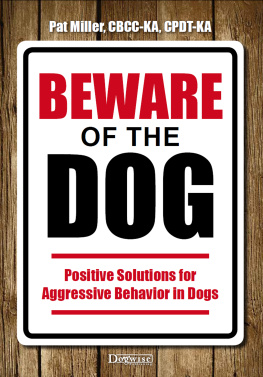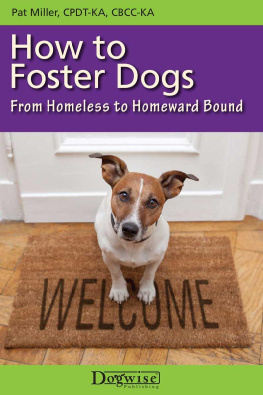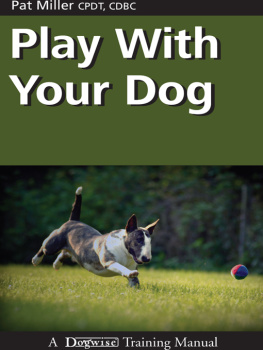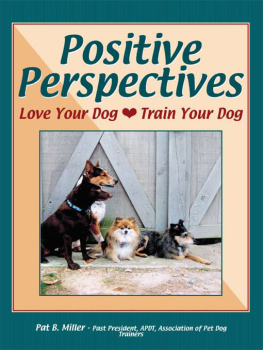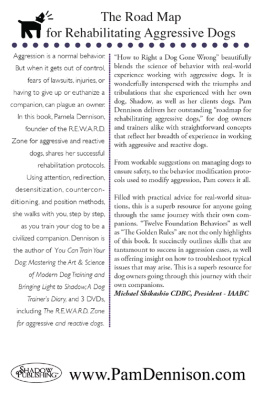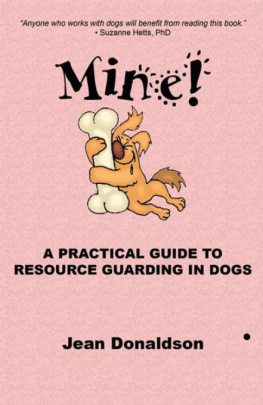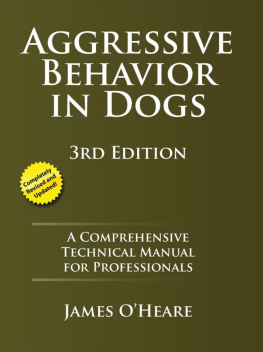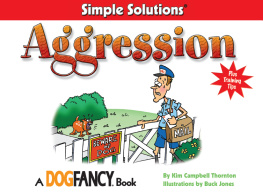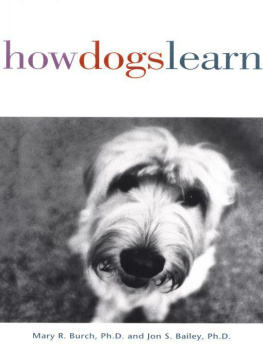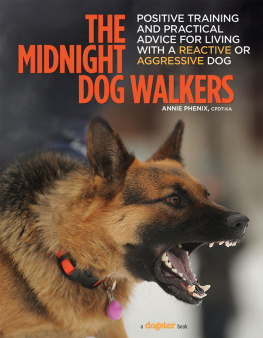BEWARE OF THE
DOG
Positive Solutions for Aggressive
Behavior in Dogs
Pat Miller, CBCC-KA, CPDT-KA

Beware of the Dog
Positive Solutions for Aggressive Behavior in Dogs
Pat Miller, CBCC-KA, CPDT-KA
Dogwise Publishing
A Division of Direct Book Service, Inc.
403 South Mission Street, Wenatchee, Washington 98801
1-509-663-9115, 1-800-776-2665
www.dogwisepublishing.com / info@dogwisepublishing.com
2017 Pat Miller, CBCC-KA, CPDT-KA
Photos: Clarissa Bergeman, Meg Leader, Lisa Santos, Pat Miller and Paul Miller
Graphic Design: Lindsay Peternell
All rights reserved. No part of this book may be reproduced or transmitted in any form or by any means, electronic, digital or mechanical, including photocopying, recording or by any information storage or retrieval system without permission in writing from the publisher.
Limits of Liability and Disclaimer of Warranty:
The author and publisher shall not be liable in the event of incidental or consequential damages in connection with, or arising out of, the furnishing, performance, or use of the instructions and suggestions contained in this book.
Library of Congress Cataloging-in-Publication Data
Names: Miller, Pat, 1951 October 14- , author.
Title: Beware of the dog : positive solutions for aggressive behavior in dogs / by Pat Miller, CBCC-KA, CPDT-KA.
Description: Wenatchee, Washington : Dogwise Publishing, 2016. | Includes index.
Identifiers: LCCN 2016037936 | ISBN 9781617811937
Subjects: LCSH: Dogs--Behavior. | Aggressive behavior in animals. | Dogs--Training.
Classification: LCC SF433 .M567 2016 | DDC 636.7/0835--dc23
LC record available at https://lccn.loc.gov/2016037936
ISBN: 978-1-61781202-6
Printed in the U.S.A.
More praise for Beware of the Dog
Pat Miller has written an ideal response to a culture that has become sensitized to problems of dog aggression. She provides a detailed critique of the futility and in-humaneness of strong-armed dominance tactics and gives the reader sound antidotes in the form of scientific and effective approaches that enhance the communication between people and dogs.
Randall Lockwood, Ph.D. Senior Vice President, ASPCA
Pat Miller has given us the ultimate positive blueprint for helping dogs with aggression. She dispels the common myths about aggression, provides guidance for navigating what can be a frightening world for many of our pets and helps to bring peace back to families living with aggression. This is Pat Miller at her finest!
Dr. Lynn Honeckman, Veterinary Behavior Solutions, Orlando, FL.
Dedication
This book is dedicated to all the dogs out there who are struggling to make a confusing and scary world work for them in the only way they know how, and to all the humans working to make their world better. And to Nancy Kerns and The Whole Dog Journal for giving me a terrific platform all these years, and Kim Kilmer, who started all this many years ago when she was acquisitions editor for a publishing company by contacting me one day out of the blue after reading my Whole Dog Journal articles and asking, Have you ever thought about writing a book? And finally and forever, to my wonderful husband, Paul, who always makes my confusing and scary world better.

Also to Dubhy, our sadly missed Scottie, who taught me all about living with a dog-reactive dog.
TABLE OF CONTENTS
I can never in a million years thank Dr. Karen Overall enough for being a leader (and a goddess) in the field of force-free training, behavior and veterinary medicine, as well as for her support for my own work. A huge thanks also to training and behavior professionals and friends Beth Brock, PMCT3; Laura Dorfman, CPDT-KA, PMCT; Kelly Fahey, PMCT2; and Beth Joy, CPDT-KA, PMCT, for agreeing to review this manuscript. Your observations and comments were decidedly instrumental in making the book better. And, of course, to Dogwise, for providing an author-friendly platform for publication of excellent dog books that might otherwise never see the light of day.
A good three-quarters of the clients in my canine behavior practice are seeing me because of their dogs aggressive behaviors. The vast majority of the time, when the human is committed to implementing the management and modification protocols presented in this book, the dogs are successful at learning how to live in their world without resorting to aggression.
What do I mean by the terms management and modification? Management is the process of arranging a dogs environment to prevent opportunity for aggressive behavior to occur. If you are having guests over, put your fear-aggressive dog safely away in a back bedroom, give him a well-stuffed KONG and other chew toys to keep him happily engaged, and lock the door. Behavior modification is more complex. It means changing the dogs behavioral and emotional responses to stimuli that cause aggression so the dog no longer feels the need to aggress. It can involve changing a dogs association with an aggression-causing stimulus by pairing it with high-value treats (Wowscary men with beards make chicken happenI think Im starting to like men with beards!) or teaching a dog an alternative behavior to replace aggressive behaviors that he has learned. A dog who barks aggressively when visitors knock at the door can learn that a knock is his cue to run happily to his crate and wait for treats.
There are several important things I consistently tell my clients as they work with their dogs:
There is no magic wand. Your dogs behavior will only change if you invest the time and effort into making it happen.
Behavior modification is not linear. Dont despair if you seem to be making progress and then experience an apparent backslide. Keep workingit will get better.
If you think you are going too slowlyslow down. Behavior modification takes timeif you rush it you will likely make things worse. Make haste slowly.
Management is critically important to a successful modification program. You must create an environment where your dog isnt allowed and doesnt feel compelled to bite someone. Dogs who bite people tend to have short lives.
If anything in your management/modification protocol seems to be making your dogs behavior worse instead of better, stop doing it, figure out whats going wrong and make necessary changes. (Of course I tell my clients to contact me immediately so I can help them make changes to the program.)
This book is intended to give the reader a better understanding of canine aggression, what it is and what causes it, along with science-based, force-free protocols for successful management and modification of aggression. Section One explains aggression, looks at our cultures perspective on aggression and debunks some of the myths about our dogs aggressive behaviors. Section Two lays a foundation for managing and modifying aggressive behavior, whether you are a dog owner working with your own dog or a professional working with clients dogs. Section Three discusses various presentations of aggression and offers protocols for working with them. Key terms are bolded when first used and are also defined in the Glossary beginning on page 182.
This book is written for owners who want to learn more about dog aggression and how to deal with it. However it is not intended to take the place of the services of a behavior professional if you find you need additional help. If your dog has a history of serious aggression, if you are afraid of your dog, and/or if you are doing appropriate work with him on your own and not making progress, please seek the assistance of a qualified, force-free behavior professional (see ).

